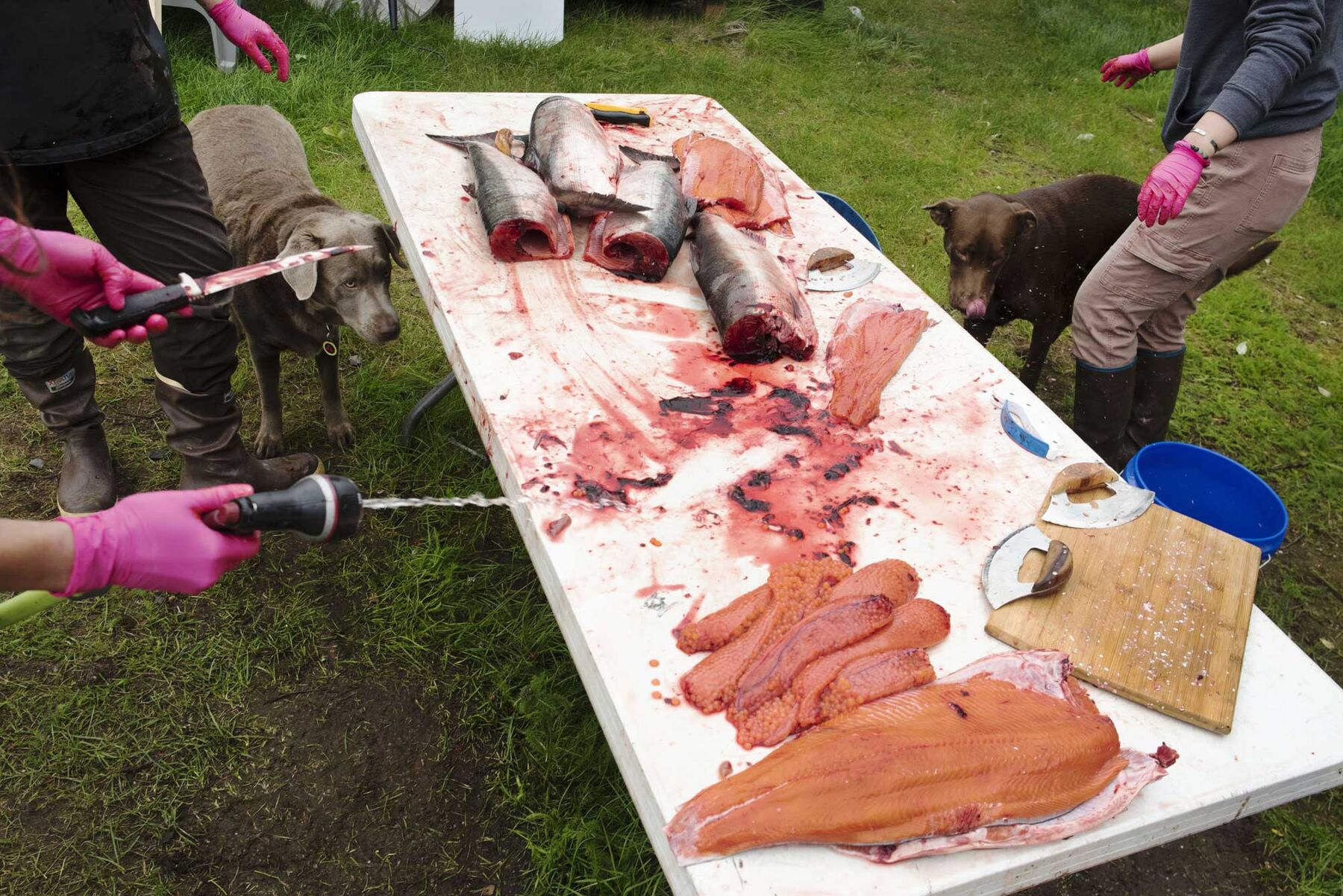Protecting fish stocks for the future – Nunavut News

Report on Marine Research Initiatives in Rankin Inlet and Alignment with Sustainable Development Goals
Introduction and Contribution to SDG 14: Life Below Water
A series of ongoing research projects initiated in 2023 by the Department of Fisheries and Oceans (DFO) in Rankin Inlet are focused on the preservation and sustainable management of local fish stocks, particularly Arctic char and Greenland cod. These initiatives directly support the objectives of Sustainable Development Goal 14 (Life Below Water) by generating critical data for the conservation and sustainable use of marine resources. The research aims to understand fish populations and the health of their ecosystem, which is fundamental to protecting marine biodiversity.
Project Origins and Collaborative Framework (SDG 17: Partnerships for the Goals)
The projects were developed in response to questions and concerns raised during an Arctic char workshop in Rankin Inlet, which involved local stakeholders, co-management partners, and community fishers. This collaborative foundation exemplifies SDG 17 (Partnerships for the Goals). The 2025 field season continued this approach, with DFO personnel working alongside local field assistant Sonny Ittinuar. This partnership is crucial for integrating scientific methods with traditional and local knowledge, filling data gaps and ensuring the research is relevant to the community. The fusion of these two knowledge bases is a powerful model for effective and inclusive scientific research.
2025 Field Season: Methodology and Data Collection
The 2025 field season, marking the third year of the program, was conducted over three weeks in Rankin Inlet. The primary activities involved an acoustic telemetry fish tracking program and a monitoring program for micro-plastics and contaminants. Key sample collections included:
- 30 Greenland cod
- 24 marine sculpins
- 15 Arctic char
Addressing Marine Pollution and Food Security (SDG 12 & SDG 2)
A significant component of the research addresses the threat of marine pollution, a key target within SDG 12 (Responsible Consumption and Production). To assess this, scientists are analyzing various fish tissues to understand contaminant pathways.
- The stomach is examined to identify ingested particles.
- The liver and muscle tissue are analyzed to determine the long-term integration of potential micro-plastics and other contaminants.
This analysis is vital for evaluating the safety of local fish stocks for human consumption, directly contributing to SDG 2 (Zero Hunger) by helping to ensure access to safe and nutritious food for the community.
Anticipated Outcomes and Community Engagement
Preliminary results from the first two years of the study are anticipated by the fall. In line with the project’s commitment to partnership and transparency (SDG 17), the findings will be compiled into a summary report. This report will be shared first with the local hunter’s and trapper’s organization in Rankin Inlet to ensure the community that depends on these resources is informed.
Commitment to Sustainable Practices
The research methodology is designed to minimize environmental impact, reinforcing the principles of SDG 14. The acoustic receivers deployed in the ocean and lakes to collect tracking data are passive. They do not emit sounds or noises that could deter or interfere with fish or other marine mammals, ensuring that the scientific monitoring does not disrupt the ecosystem it aims to study.
1. Which SDGs are addressed or connected to the issues highlighted in the article?
SDG 14: Life Below Water
- The article’s central theme is the preservation and study of marine life, specifically Arctic char and Greenland cod. The entire project conducted by the Department of Fisheries and Oceans (DFO) is aimed at understanding and protecting marine ecosystems.
SDG 2: Zero Hunger
- The research directly addresses food safety by investigating whether the levels of micro-plastics and contaminants in fish are a “potential concern for human consumption.” This connects to ensuring access to safe and nutritious food, a key aspect of this goal, especially for communities reliant on fishing.
SDG 12: Responsible Consumption and Production
- The article discusses the monitoring of marine pollution (micro-plastics and contaminants) and its integration into the food chain. This relates to the environmentally sound management of waste to minimize adverse impacts on human health and the environment.
SDG 17: Partnerships for the Goals
- The project exemplifies a multi-stakeholder partnership. It describes a collaboration between a government agency (DFO), scientific researchers, and local community members, including a local field assistant and elders. The article highlights the value of merging “local knowledge and your scientific knowledge.”
2. What specific targets under those SDGs can be identified based on the article’s content?
SDG 14: Life Below Water
- Target 14.1: By 2025, prevent and significantly reduce marine pollution of all kinds. The project’s “micro-plastics and contaminates-monitoring program” is a direct action towards understanding and ultimately reducing the impact of marine pollution.
- Target 14.4: By 2025, effectively regulate harvesting and end overfishing… and implement science-based management plans, in order to restore fish stocks. The overall goal of “preserving fish stocks” and the use of “acoustic telemetry fish tracking” are efforts to gather scientific data for science-based management plans.
- Target 14.a: Increase scientific knowledge, develop research capacity and transfer marine technology… to improve ocean health. The project is a clear example of increasing scientific knowledge about fish stocks and contaminants. The collaboration with local assistants like Sonny Ittinuar to “fill in a lot of the gaps we had in the data” represents the development of research capacity and knowledge sharing.
SDG 2: Zero Hunger
- Target 2.1: By 2030, end hunger and ensure access by all people… to safe, nutritious and sufficient food all year round. The research explicitly questions if contaminant levels are “of concern or potential concern for human consumption,” directly addressing the “safe” food component of this target for the local population that consumes these fish.
SDG 12: Responsible Consumption and Production
- Target 12.4: By 2020, achieve the environmentally sound management of chemicals and all wastes… to minimize their adverse impacts on human health and the environment. The study of how micro-plastics and contaminants are integrated into fish tissue (liver, muscle) is a direct investigation into the impacts of waste on the environment and potential human health.
SDG 17: Partnerships for the Goals
- Target 17.17: Encourage and promote effective public, public-private and civil society partnerships. The project is a partnership between a public institution (DFO) and civil society (local stakeholders, community fishers, elders, and the hunter’s and trapper’s organization), demonstrating an effective collaboration to achieve a common goal.
3. Are there any indicators mentioned or implied in the article that can be used to measure progress towards the identified targets?
Indicators for SDG 14 (Life Below Water)
- Implied Indicator for Target 14.1: Measurement of the concentration of micro-plastics and contaminants in marine species. The article states that samples of stomach, liver, and muscle tissue were collected from 30 Greenland cod, 24 marine sculpins, and 15 Arctic char to analyze “ingested particles” and “longer term integration of potential micro-plastics or contaminates.” The results of these tests will serve as a direct indicator of marine pollution levels.
- Implied Indicator for Target 14.4: Data on fish populations and movements for stock assessment. The use of “acoustic telemetry fish tracking” provides data to understand fish behavior and population health, which is a key indicator for managing fish stocks sustainably.
Indicators for SDG 2 (Zero Hunger)
- Implied Indicator for Target 2.1: Data on the safety of food sources. The analysis of contaminant levels in fish to determine if they are a “concern for human consumption” serves as an indicator for food safety. The findings, once available, will measure whether this food source is safe.
Indicators for SDG 17 (Partnerships for the Goals)
- Implied Indicator for Target 17.17: Existence and functioning of multi-stakeholder partnerships. The article describes the active collaboration: “we worked with local field assistant Sonny Ittinuar,” received “input from community members, elders and the resource users,” and plans to share results with the “hunter’s and trapper’s organization.” These actions are qualitative indicators of a functioning partnership.
4. Table of SDGs, Targets, and Indicators
| SDGs | Targets | Indicators Identified in the Article |
|---|---|---|
| SDG 14: Life Below Water | 14.1: Reduce marine pollution. 14.4: Sustainable fishing and restoring fish stocks. 14.a: Increase scientific knowledge and research capacity. |
– Levels of micro-plastics and contaminants in fish tissue (stomach, liver, muscle). – Data from acoustic telemetry fish tracking for stock assessment. – Implementation of a scientific research project merging scientific and local knowledge. |
| SDG 2: Zero Hunger | 2.1: Ensure access to safe and nutritious food. | – Assessment of whether contaminant levels in fish are a concern for human consumption. |
| SDG 12: Responsible Consumption and Production | 12.4: Environmentally sound management of waste to minimize impacts on human health and the environment. | – Analysis of the integration of contaminants into the marine food web via fish sampling. |
| SDG 17: Partnerships for the Goals | 17.17: Encourage and promote effective public and civil society partnerships. | – Active collaboration between DFO (public institution) and local community members, elders, and organizations (civil society). |
Source: nunavutnews.com

What is Your Reaction?
 Like
0
Like
0
 Dislike
0
Dislike
0
 Love
0
Love
0
 Funny
0
Funny
0
 Angry
0
Angry
0
 Sad
0
Sad
0
 Wow
0
Wow
0










































































